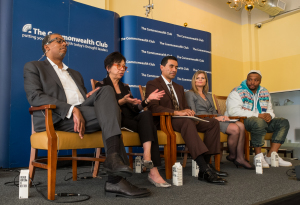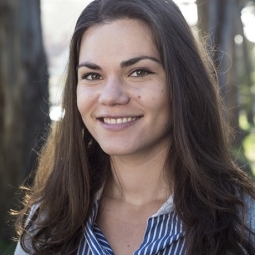Biases: The Greatest Threat to Increasing Diversity in Environmental Institutions
Publication Date
Image

Story/Content
Recently, the Institute attended a few events centered on the importance of diversity and inclusion in the workplace. One event was presented by Green 2.0, the other was hosted by 4S.
On March 4th, Green 2.0, in partnership with New America Media, hosted an event called “Breaking the Green Ceiling.” This conference, based off their report, was designed to raise awareness and find solutions to a major issue facing environmental organizations – the lack of diversity. To give some context, the report found that “people of color do not exceed 16% of the staff in any of the organizations surveyed.” In the report, the reason for this “green ceiling” is attributed to unconscious bias and alienation when hiring and retaining qualified people of color. As an organization in the environmental field, this is something of which we are already very aware, but we are glad to see that the conversation is gaining momentum among the masses.
There were several solutions presented on how organizations are tackling the diversity challenge, but first, this question was posed – why is it important to share diversity data in the first place? The most common answer was transparency and accountability. Hank Williams, Technologist and Entrepreneur of Platform said, “We all know the data is bad, just come clean.” Once organizations offer their data, it gives them something to measure their success against in the future, and allows them to be held accountable, both internally and externally.
A few highlights from the presentations included:
- Make a plan and follow through with deliberate actions. For example, make accountability a part of every manager’s performance appraisal.
- Don’t remain silent on core human issues – decide which side you stand for (hopefully it’s pro-diversity) and show your support for it.
- Ask questions, diversify the conversation, and be open to new ideas.
- Empower people on the ground.
However, none of these solutions will be successful unless the change comes from above.
Similarly to the “green ceiling” effect, which may help explain the dearth of people of color in environmental organizations, unconscious bias is also prevalent in education. This was the topic covered in 4S’s March 18th meeting on “Culturally Relevant Pedagogy / Communicating with Diverse Populations.”
The audience was comprised of dedicated professionals involved with youth programming, with a genuine interest in learning how best to bridge the gaps created by implicit biases. From the start, the facilitators from the San Francisco Unified School District (SFUSD) fostered an environment that made us feel comfortable with feeling uneasy, as conversations about race tend to do. We jumped right into probing questions such as “when you tell your friends and families that you work with urban kids, what do they think that means? What places are urban?” For many of the educators present, the word “urban” actually denoted other things—pollution, poverty, communities of color—and was used euphemistically, perhaps to avoid any uncomfortable follow-up questions or negative connotations. This sentiment reflects the point made by the SFUSD facilitators that in wanting to be allies to underserved communities, people sometimes avoid discussing things like race and poverty altogether, which can detract from this important discourse.
In avoiding difficult discussions, educators may also avoid delving deeper and addressing personal unconscious biases, which are attitudes or stereotypes that may affect our understanding, actions, and decisions. Additionally, we listened to an illuminating TedTalk by UCLA law professor Jerry Kang on how people assume they have “immaculate perception,” judgment without stereotypes, but that in reality, the way we perceive others is highly dependent on prior mental constructs. Characteristics of these implicit biases is that they are pervasive, do not necessarily align with our declared beliefs, tend to favor our own in-group (people like us), and—perhaps most importantly— they can be changed!
After going over the realities of implicit biases and how they can be addressed, we discussed the systems or structures present within our organizations that may lead to inequitable outcomes and how we are disrupting these systematic inequalities. During this exercise, I thought of the Urban Program I work on here at the Institute. In the Urban Program, we act as strategic partners to the National Park Service (NPS) on a number of issues, including increasing the relevancy of the NPS in urban communities. One inequitable outcome we’re facing is that non-Hispanic white people are more likely to visit national parks and reflect the makeup of the NPS staff. The U.S. Census estimates that by 2050, the population of children of color will be 62%, making them the majority. This implies that the NPS, in addition to other organizations grappling with a lack of diversity, must create enduring relationships with new audiences in order to adequately adapt to the changes occurring throughout the country. The NPS has already made great strides in disrupting these inequalities through initiatives aimed at improving diversification among its staff and visitor population. However, there is always more work to be done. Understanding how implicit biases work and how we can address them, both individually and in our organizations, is a critical first step to making sure all communities feel empowered to be a part of and help advance the environmental movement.



